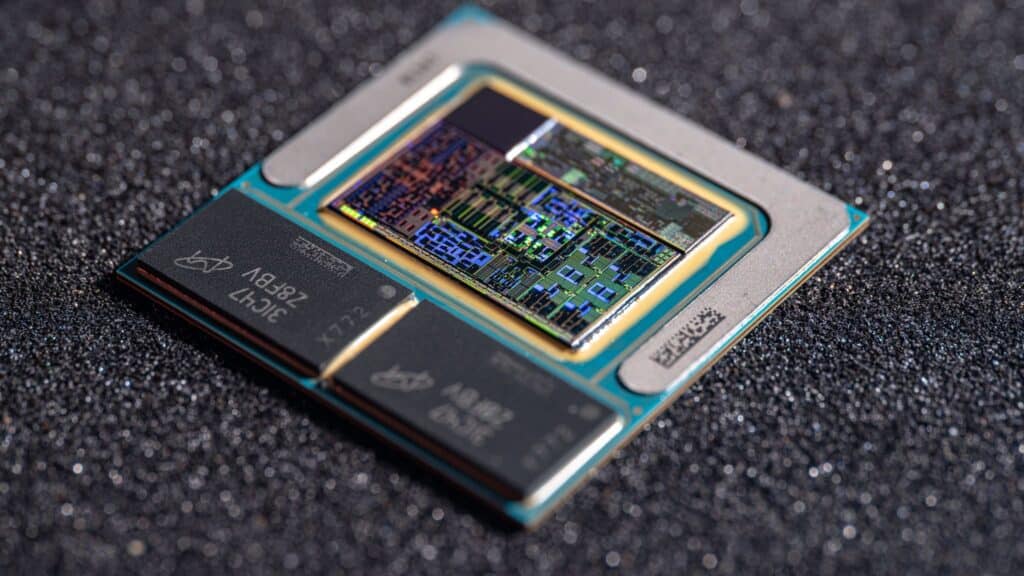Revelations have leaked the preliminary configurations for Intel’s next-generation mobile CPUs, showing a significant upgrade in core count and integrated GPUs.
Intel is gearing up to launch its new flagship architecture for laptops, Nova Lake Mobile, which will be part of the upcoming Core Ultra 400 family. According to a leak shared by user @Jaykihn on X, the company is developing up to five different configurations, with models reaching as many as 28 cores in the high-end notebook segment.
These processors will adopt two new internal architectures:
- Coyote Cove for high-performance P-cores
- Arctic Wolf for efficient E-cores
The leak confirms that Intel will incorporate a new design featuring LP-E cores (super low-power cores) within a low-power island, which will enhance energy efficiency during light tasks and extend battery life.
Nova Lake-HX: the flagship for enthusiast laptops
The most powerful model in the lineup will be Nova Lake-HX, configured as follows:
- 8 P-cores (Coyote Cove)
- 16 E-cores (Arctic Wolf)
- 4 LP-E cores
- 4 Xe3 iGPU cores (Celestial)
Totaling 28 cores (24 on the main chip + 4 LP-E cores on the low-power island). The TDP is expected to be around 55 W, aimed at high-performance laptops and mobile workstations.
Intel likely won’t provide a dual-tile version for notebooks at least for now, positioning this model as the performance pinnacle in the mobile range.
Nova Lake-H Range: balancing power and efficiency
Below that, the Nova Lake-H lineup will feature up to 16 cores and more powerful integrated GPU options:
- A configuration with 12 Xe3 iGPU cores, targeting high-performance integrated graphics.
- A configuration with 4 Xe3 iGPU cores, aimed at laptops relying on dedicated GPUs.
Both variants are expected to have an approximate TDP of 28 W, allowing direct competition in the premium and ultra-thin gaming laptop segments.
Nova Lake-U: the low-power series
In the entry-level segment, the Nova Lake-U series will target ultra-lightweight and convertible laptops, with reduced yet optimized configurations for battery life:
- A model with 4 P-cores + 4 LP-E cores with 4 Xe3 iGPU cores (~28 W).
- A basic model with 2 P-cores + 4 LP-E cores, featuring 2 Xe3 iGPU cores (~15 W).
These processors will omit E-cores on the main die, simplifying the design and reducing power consumption.
Launch and roadmap
The Intel Nova Lake Mobile family isn’t expected until the second half of 2026, so configurations and clock speeds may still change. Before their release, Intel will complete the rollout of Panther Lake, anticipated by late 2025 or early 2026.
Additionally, Intel is expected to introduce Nova Lake-AX variants, which will directly compete with AMD’s Halo APUs, combining high-performance CPU+GPU on a single chip for gaming and content creation.
FAQs
1. What sets Nova Lake apart from previous Intel generations?
It features new core architectures (Coyote Cove and Arctic Wolf), more LP-E cores for efficiency, and a redesigned Xe3 integrated GPU.
2. Are the 28 cores in the HX model comparable to a desktop processor?
Number-wise, yes, but clock speeds and power consumption are tailored for portable environments, so raw performance will be lower than an equivalent desktop chip.
3. What graphical improvements will Xe3 iGPUs offer?
Expected to deliver a 30-40% performance boost over Xe2, with advanced support for ray tracing and modern video encoding/decoding.
4. Can Nova Lake-U compete with Apple’s M-Series in efficiency?
Designed to improve battery life and performance per watt, but actual comparison will depend on software optimizations and system integration.
via: wccftech

